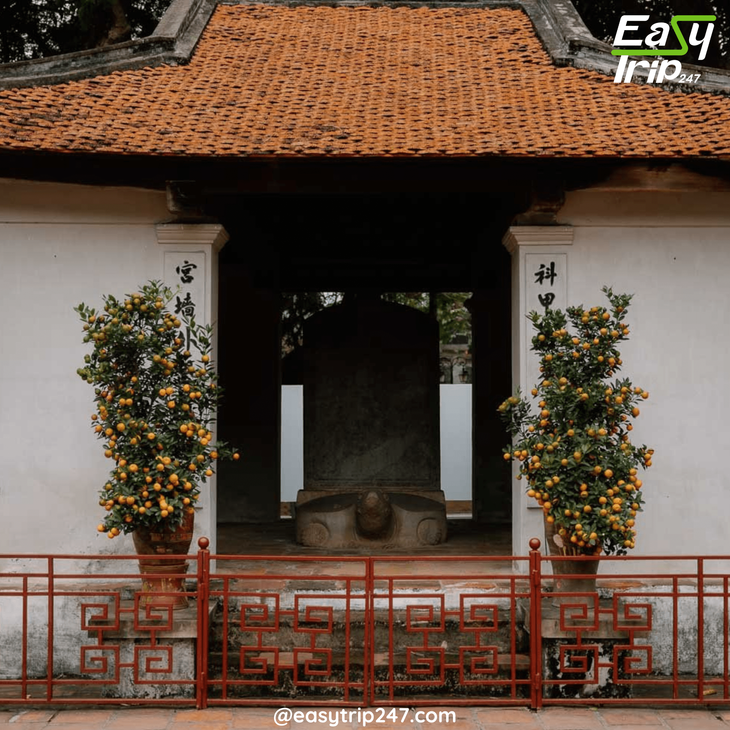A Complete Guide to Touring the Temple of Literature in Hanoi
On
23/06/2025Reading time:
1 min
Summary:
If you’re searching for a cultural treasure in Vietnam’s capital that blends history, serenity, and architecture, look no further than the Temple of Literature Hanoi. Often referred to as the cradle of Vietnam’s Confucian education, this remarkable complex isn’t just a relic of the past—it’s a living, breathing symbol of national pride and scholarly achievement.

The Temple of Literature Hanoi was founded in 1070, making it nearly a millennium old. Originally built to honor Confucius and his teachings, the site evolved into Vietnam’s first national university—the Imperial Academy—where the elite were trained for civil service. It’s not just a temple but a prestigious learning center that shaped centuries of Vietnamese intellectuals. Today, it’s one of Hanoi’s most important historical and cultural landmarks, visited by locals and tourists alike.
As you step into the Temple of Literature Hanoi, the world outside fades away. The complex is structured around five courtyards, each unfolding with its own unique atmosphere and purpose. The outermost courtyard welcomes you with lush gardens, aged banyan trees, and the calming sound of birdsong. It feels like a peaceful pause from the chaos of Hanoi’s traffic, inviting you to slow down and breathe in the historic air.
One of the highlights of the second courtyard is the Khue Van Cac Pavilion—a beautiful red and white structure elevated on pillars, often regarded as a symbol of Hanoi. This architectural gem stands as a gateway to the inner sanctums of the Temple of Literature Hanoi and is a favorite spot for photographers, students, and anyone enchanted by Vietnamese design. It's the kind of place that looks like it belongs in a storybook, yet it’s very much real and alive.
As you move deeper into the complex, the third courtyard greets you with the Well of Heavenly Clarity, surrounded by 82 stone turtles, each bearing a stela engraved with the names of successful scholars. These turtles are not only iconic but also deeply symbolic, representing wisdom and longevity. Students often come here to touch the turtles and seek good luck for exams—part of a tradition that bridges ancient values with modern hopes. These sacred stones are one of the most photographed and respected parts of the Temple of Literature Hanoi.
The fourth courtyard is where you’ll encounter the heart of Confucian worship within the temple. Here, the altars are elaborately decorated with offerings of incense, candles, and fruit. Statues of Confucius and his disciples gaze serenely at visitors, and the aroma of sandalwood fills the air. It’s easy to feel the reverence here—not just in the ornate architecture, but in the quiet footsteps and hushed voices of those who pass through.
In the fifth and final courtyard, you’ll find the reconstructed Imperial Academy. Although the original buildings were damaged over centuries of wars and weather, modern efforts have carefully restored this section based on historical records. Exhibits now display ancient texts, educational tools, and scholar robes, giving visitors a glimpse into Vietnam’s academic heritage. This part of the Temple of Literature Hanoi often surprises people with its detail and the sense of legacy it imparts.
Touring the Temple of Literature Hanoi is best done early in the morning or late in the afternoon to avoid crowds and the midday heat. The lighting is also gentler at these times, perfect for photos and peaceful exploration. While entrance fees are modest, what you gain in experience is immeasurable. Consider hiring a local guide or using an audio tour to uncover fascinating stories that aren't always mentioned in brochures—like the strict moral code students were expected to follow or the legends behind the stele turtles.
When visiting, dress modestly to respect the spiritual significance of the site. The Temple of Literature Hanoi is still used today for important ceremonies, especially around Tet (Vietnamese New Year) and graduation season. You may even witness students in their áo dài, posing for photos and paying homage before starting the next chapter of their academic journeys.
One of the unique features of the Temple of Literature Hanoi is how it seamlessly blends the natural with the intellectual. The tranquil courtyards, fragrant gardens, and lotus ponds create a setting that is both aesthetically stunning and spiritually grounding. It's not uncommon for visitors to lose track of time as they wander between shaded walkways and ornately carved gates. Every detail—from the dragons guarding the roofs to the bonsai trees—tells a story.
Aside from its cultural and historical value, the Temple of Literature Hanoi is also a hub of art and community. Throughout the year, it hosts calligraphy exhibitions, poetry readings, and traditional music performances. These events breathe life into the ancient stones and reinforce the temple’s role as a living cultural institution. If you're lucky to catch one of these during your visit, don’t miss the chance to witness Vietnamese traditions in action.
After your visit, take some time to explore the surrounding area. Just a short walk from the temple are cozy cafés, artisan shops, and bookstalls—perfect for reflecting on your experience or picking up a unique souvenir. You can even find shops that sell hand-copied calligraphy of your name in ancient characters, a thoughtful memento linked to the scholarly spirit of the Temple of Literature Hanoi.
In a city bursting with energy and rapid development, the Temple of Literature Hanoi offers a precious window into the Vietnam of yesterday. It’s a place where time slows down, where values of respect, learning, and humility are carved into stone and echoed in every corner. Whether you're on a quick city tour or a deep cultural journey, a visit here enriches your understanding of Vietnam’s soul.
So, is the Temple of Literature Hanoi worth visiting? Absolutely. It's not just about history—it’s about feeling connected to something timeless. From the sacred turtles to the red-roofed pavilions, from the whispers of scholars past to the laughter of students today, this site captures the heart of Vietnamese heritage. If you’re planning a trip to Hanoi, make sure the Temple of Literature Hanoi is on your list—you’ll walk away wiser, calmer, and deeply inspired.
Design Your Tour Today And Get A Quote. Contact Us Here: +84.975.504.825
Source: Easytrip247 Team compiled.
